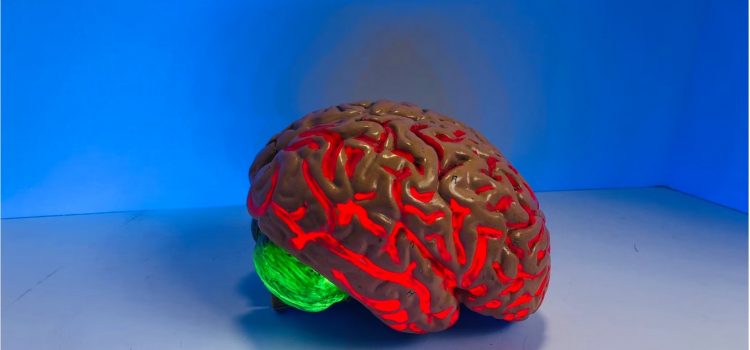

This article is an excerpt from the Shortform book guide to "Driven to Distraction" by Edward M. Hallowell and John J. Ratey. Shortform has the world's best summaries and analyses of books you should be reading.
Like this article? Sign up for a free trial here.
What is attention deficit hyperactive disorder (ADHD)? What are the symptoms of ADHD?
ADHD is a common neurodevelopmental condition most often seen in children, but not excluded in adults. In Driven to Distraction, Edward M. Hallowell and John J. Ratey explore the condition, what causes it, and its symptoms.
Keep reading to learn more about ADHD.
ADHD Meaning
What is attention deficit hyperactive disorder? ADHD is a condition with a wide range of symptoms, usually characterized by inattentiveness or a tendency to be easily distracted, impulsivity, and hyperactivity. People with ADHD often experience difficulty focusing or getting started on tasks, disorganization, and memory issues, among other symptoms.
(Shortform note: The specific traits of people with ADHD vary widely, making it difficult to give a comprehensive definition or settle on an appropriate name for the condition. Some experts have suggested that, instead of naming the disorder to indicate inattentiveness or hyperactivity, we should refer to it as an issue with executive functioning. Executive functioning is the mental skillset we use to do things consciously (as opposed to things we do unconsciously, like breathing) and includes anything that involves planning, remembering, or making decisions.)
Prior to the late 19th century, experts believed ADHD was a condition exclusive to children, which they outgrew by adulthood. But more recent research has proven that it affects adults, as well. This book’s main focus is on ADHD in adults.
Theories on the Neurological Causes of ADHD
Now that you know how ADHD manifests, let’s look at the neurology behind it. Research has not been able to pinpoint one specific neurological cause for ADHD. ADHD directly affects your brain’s attentional system, which, as the name suggests, is the system we use to pay attention to everything we see, hear, do, or think. Because this is such a broad range of functions, almost every structure in the brain plays a part in the attentional system, making it difficult to trace ADHD to a particular neurological source.
Still, researchers have proposed a number of theories for how ADHD occurs in the brain. Let’s look at some of them:
One theory proposed in 1970 was that certain neurotransmitters in the brain, namely norepinephrine and dopamine, are underproduced or ineffectively used by the brain in people with ADHD, causing a chemical imbalance that could affect its functioning.
Another theory is that the frontal lobes of the brains of people with ADHD are less active, which causes disinhibition: difficulty regulating behavior and impulses. This could explain why a person with ADHD would usually have fewer inhibitions or less restraint than a person without ADHD.
Some researchers also believe that the condition results specifically from problems in the right hemisphere of the brain, which is associated with executive functioning and simultaneous processing of multiple stimuli. Others relate it to a deficiency in working memory that makes it difficult to understand your past and present experiences and anticipate future ones.
Additionally, some researchers think ADHD is the result of lowered functioning of the brain’s reward centers. This could make it harder for the person with ADHD to understand and learn from the consequences of their actions or words. This relates to a theory that a dysfunction of the brain’s motivation system prevents the brain from concentrating consistently without a constant reward.
These theories don’t necessarily contradict, and can even complement, each other. Regardless of the neurological cause, researchers agree that ADHD is a congenital condition that’s passed down genetically. Future research aims at understanding the biological factors of ADHD more deeply to improve treatments and mitigate symptoms.
Symptoms of ADHD
The authors list both primary and secondary symptoms of ADHD. Primary symptoms are symptoms of the condition itself, whereas secondary symptoms are the psychological effects of having the disorder. You must identify your symptoms to find and implement the most effective accommodations and treatment for your ADHD.
It’s useful to note that the traits associated with ADHD can affect anyone. However, when they occur more intensely and for longer than for others of the same age, and they have a significant impact on your life, they’re often symptoms of ADHD.
Primary Symptoms of ADHD
Let’s first look at the primary and then the secondary symptoms of ADHD. Primary symptoms of ADHD include:
- Hyperactivity
- Attention inconsistency
- Disorganization
- Memory disruptions
Additionally, people with ADHD often have a poor sense of the passage of time, have frequent mood swings or extreme experiences of emotion, and have a lot of difficulty with follow-through, often having many different unfinished projects going at once.
Despite these negative-seeming symptoms, the authors emphasize that ADHD can come with strengths as well, the foremost being creativity: The way a person with ADHD thinks is more chaotic than that of a person without ADHD, allowing them to make connections between thoughts and ideas that others may not consider.
Secondary Symptoms of ADHD
Let’s now move on to the secondary symptoms of ADHD: the negative effects the condition can have on your mental and emotional well-being. These secondary symptoms arise because our society is set up in a way that makes life especially difficult for people with ADHD, contend the authors.
For one thing, we’re expected to spend six or more hours per day sitting in a classroom or working at a desk, focusing on tasks we may find monotonous. In addition, our schools, workplaces, and even homes and social spheres are full of distractions that we’re expected to tune out. If you have ADHD, your brain might make it impossible for you to meet these expectations. But because of the lack of understanding about the needs of people with ADHD in our society, you may be labeled as “lazy,” “unmotivated,” “thoughtless,” “selfish,” or just plain “bad.” The stigma this creates can be so discouraging that it causes severe psychological harm.
Secondary symptoms of ADHD include:
- Low self-esteem and poor self-image
- Interpersonal conflicts
- Difficulties in school
- Self-doubt
The authors say it’s important to identify and treat secondary symptoms of ADHD as well as primary ones because the treatment for the primary symptoms won’t necessarily mitigate the secondary symptoms.

———End of Preview———
Like what you just read? Read the rest of the world's best book summary and analysis of Edward M. Hallowell and John J. Ratey's "Driven to Distraction" at Shortform.
Here's what you'll find in our full Driven to Distraction summary:
- What ADD is, theories on the possible causes, and potential treatments
- How our knowledge of ADD has changed since the book’s republication in 2011
- Tips for how to minimize your negative symptoms and make the most of your strengths






